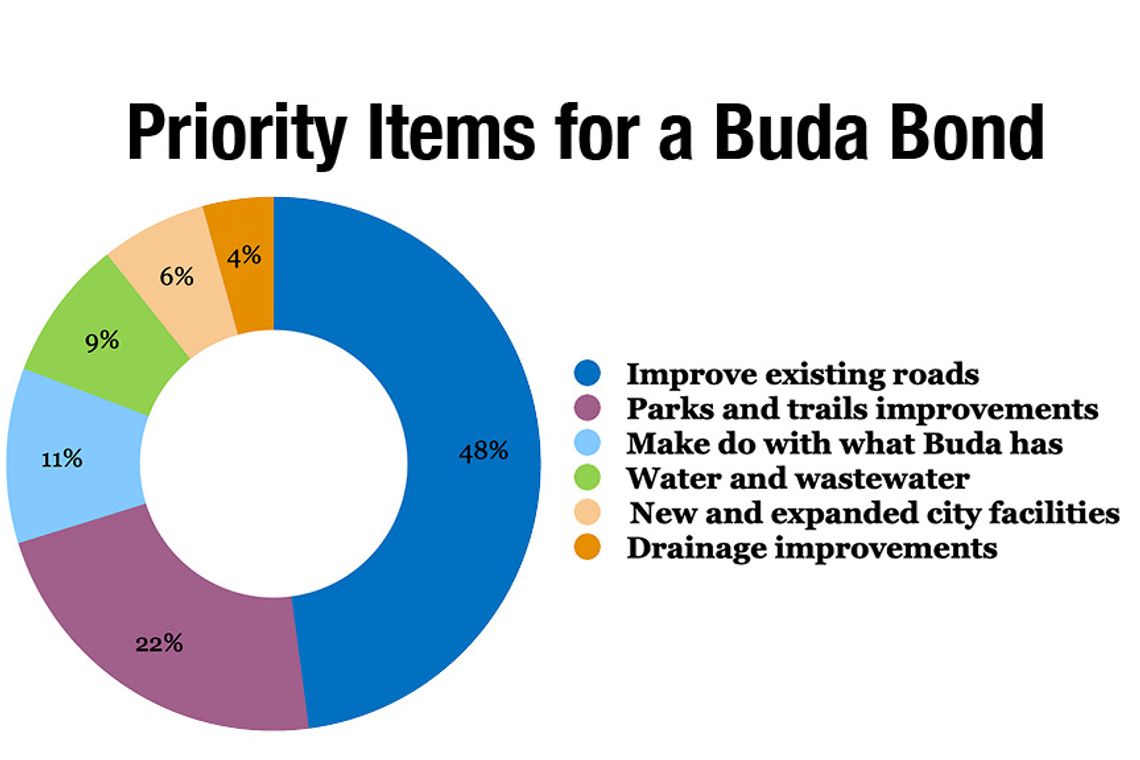By Sahar Chmais
It comes down to what Buda residents are willing to pay to improve their roads, parks and drainage systems; but there is a possibility the existing residents do not have to pay at all.
What if Buda could count on the incoming residents to pay? The most probable solution to enhancing the community is another bond package. As more people move in, the income from their property taxes will help cover the cost of a bond package, which accrues small interest and gets paid over several decades.
“If you can plan in advance before the growth gets [to a city],” said Jeff Barton, co-founder of Gap Strategies, a consulting firm for urban planning and infrastructure, “it’s cheaper to plan it now than it is to retrofit a road later when it becomes more crowded.”
Whether residents want Buda to remain a small city or they embrace the growth, it is expected that the population will continue to increase and reach 40,000 by 2040.
Buda’s unstoppable growth has caused a traffic issue that people cannot turn a blind eye to. Roads have become congested and worn down – unable to support the near 18,000 residents and incoming developments.
Maintaining the growth while keeping up a certain quality of life may need the intervention of yet another bond, which is expected to be ready by early August, to be voted on in November. How much the bond will cost residents depends on several factors, but there is a possibility that the bond will not hike up taxes on existing residents, according to Barton.
Buda has been collecting information about priority projects the city can add on or improve. The survey had 564 participants. It comes as no surprise that nearly 50% of residents voted in favor of improving roads. The second priority was parks and trails improvement.
Gap Strategies is still working on the bond package and has four more meetings to go before the items are finalized. The city has not assessed the bond cost, said deputy city manager, Micah Grau, but there are some figures in the works so residents can get an idea on what to expect.
If the bond is about $50,000,000, it would not cause a tax increase, according to Barton. The overall wishlist costs more than that; after more meetings and input, there will be more information on whether to slim down the tab or not. If everything on the wishlist gets put in the bond, it will cost the taxpayers, Barton added.
Besides dozens of road improvements, Garison Park is another project the city has set its eyes on. Drainage projects are also an issue the city may be able to tackle in the bond.
More than 60% of the survey respondents said they would be willing to pay more taxes to see improvements in Buda, but not everyone agrees on how much more they are willing to pay. About 16% of the respondents said they do not want any tax increases.
It is not too late for residents to voice their opinions about the bond. They can leave comments on what they envision for Buda at www.budabonds.com/contact, or directly contact their representatives. Buda will have a better idea of what the bond will look like in one month, Grau said.
DISCLAIMER: Jeff Barton, co-founder of Gap Strategies, is married to Cyndy-Slovak Barton, publisher of the Hays Free Press/News-Dispatch.










